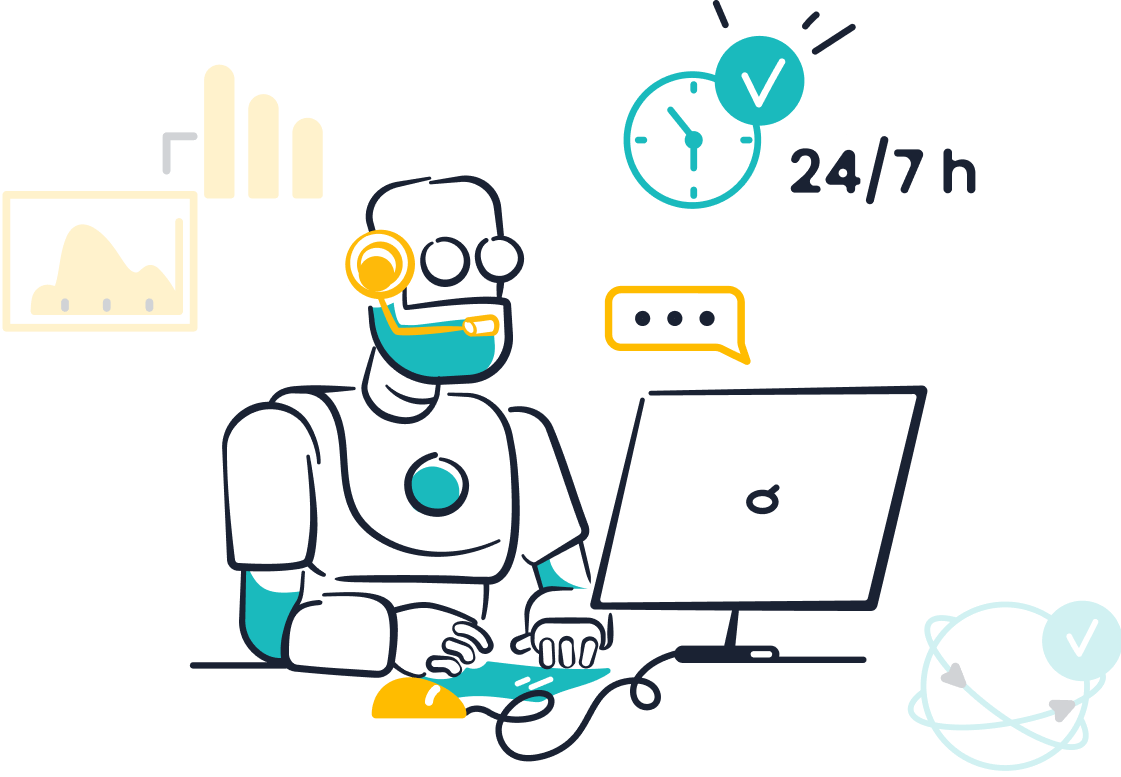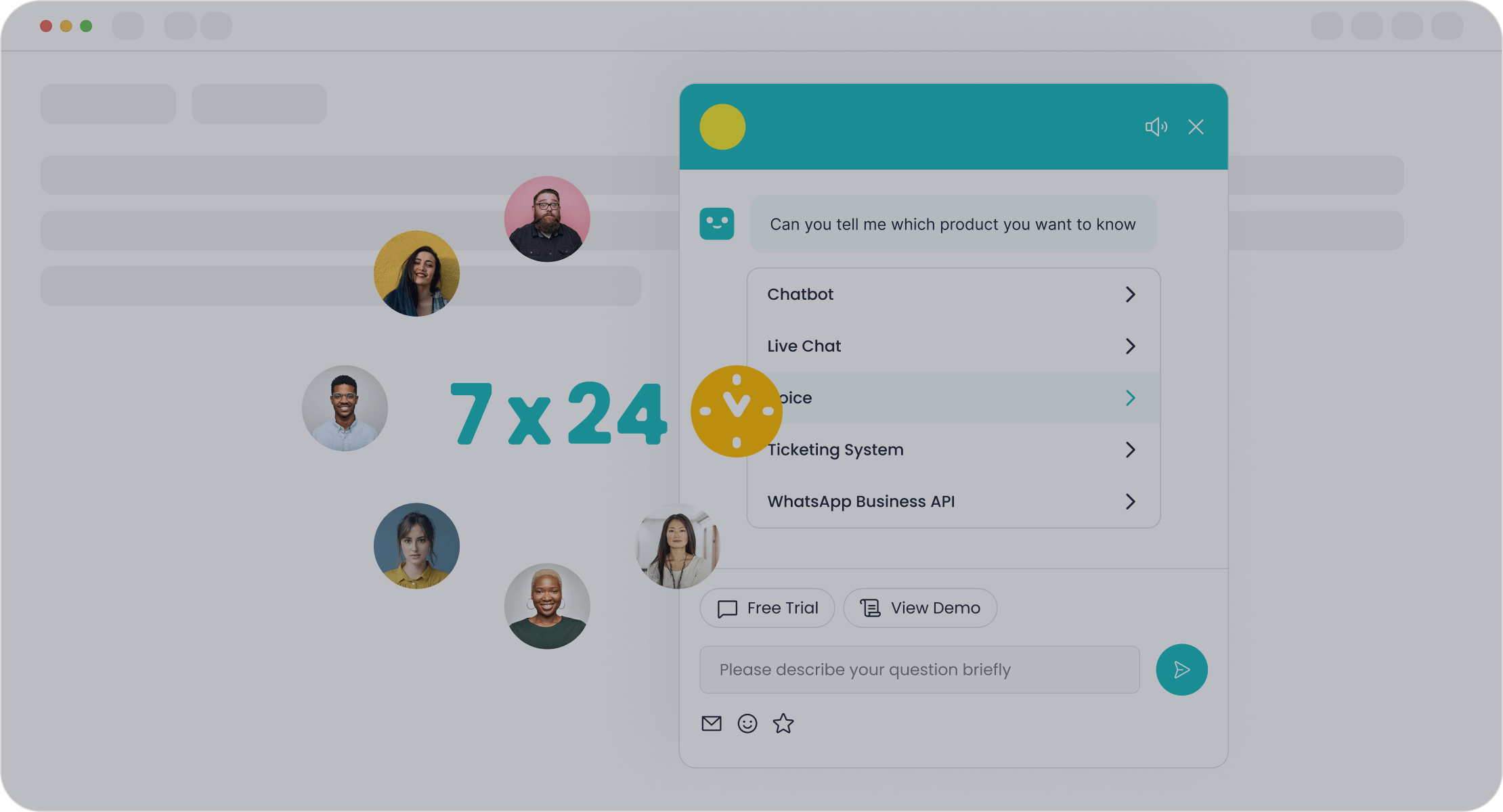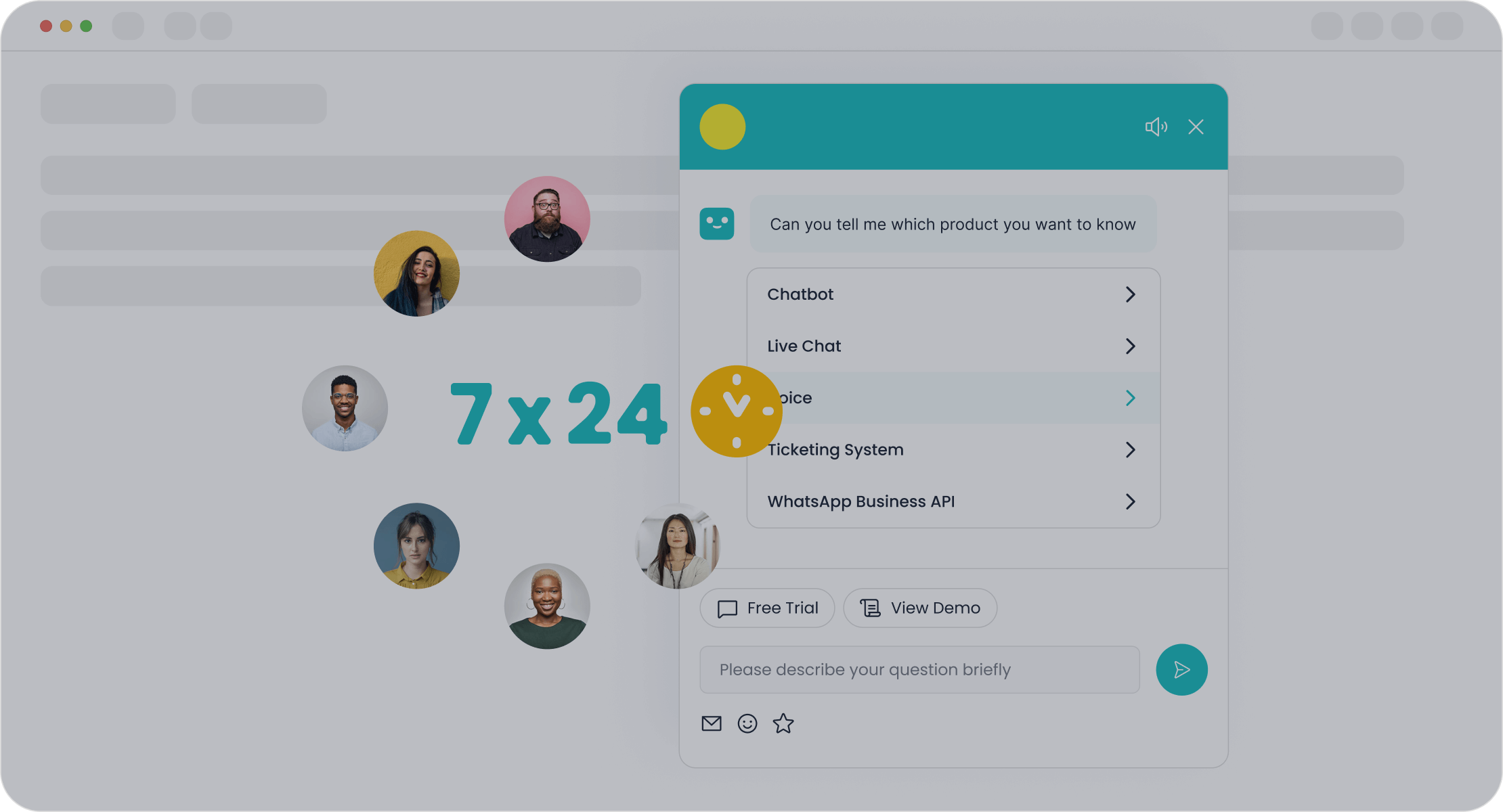How Conversational AI Is Revolutionizing Telecom in 2025

Conversational AI now plays a vital role in telecom customer service, delivering measurable improvements across the industry. Telecom companies use proactive conversational AI to resolve up to 70% of Tier 1 customer inquiries without human help. Sobot AI leads this shift by providing services that automate support, track agent performance, and optimize shift scheduling through the Sobot call center. With proactive conversational AI, telecom customer service teams offer 24/7 services, cut wait times by 25%, and see higher customer satisfaction. These advances show how conversational AI in telecom creates faster, smarter, and more reliable services for everyone.
Conversational AI in Telecom

Definition
Conversational ai in telecom means using smart computer programs to talk with customers. These programs, called chatbots or ai chatbots, can answer questions, solve problems, and help people any time of day. Telecom companies use conversational ai to make their services faster and more helpful. Proactive conversational ai can even reach out to customers before they ask for help. This technology helps telecom companies give better services and keep customers happy.
According to a 2024 Gartner report, conversational ai in telecom will handle over 70% of customer interactions by 2025. This shows how important chatbots and ai chatbots have become for telecom services.
Technologies
Many technologies work together to make conversational ai in telecom possible. Here is how these systems work:
-
Listening:
- Automatic Speech Recognition (ASR) turns spoken words into text, even with noise or accents.
- Spoken Language Understanding (SLU) uses context to fix mistakes in ASR.
-
Reasoning:
- Large Language Models (LLMs) understand what customers want.
- Dialogue Management keeps the conversation on track.
- Safety Guardrails protect the system from bad inputs.
-
Speaking:
- Voice Cloning and Synthesis make ai chatbots sound more human.
-
Integration:
- These systems connect with apps, websites, and databases to give real-time answers.
These technologies help chatbots and ai chatbots deliver proactive conversational ai and support telecom services across many channels.
Sobot Chatbot
Sobot leads the way in conversational ai in telecom. The Sobot Chatbot uses advanced ai chatbots to provide 24/7 support and proactive conversational ai. Sobot’s chatbots work across WhatsApp, SMS, and social media, making it easy for customers to get help anywhere. The chatbot supports over 50 languages, so telecom services can reach people all over the world. Sobot’s chatbots also use real-time sentiment analysis to understand how customers feel and adjust their responses. For example, Samsung used Sobot’s services to reach a 97% customer satisfaction rate and a 30% increase in agent efficiency. Sobot’s omnichannel platform lets telecom companies manage all customer conversations in one place, making their services more efficient and reliable.

| Feature | Sobot Chatbot Advantage |
|---|---|
| Multilingual Support | 50+ languages |
| Omnichannel | WhatsApp, SMS, social media, CRM |
| Proactive Messaging | Reaches out to customers before issues arise |
| Real-Time Analytics | Tracks customer mood and agent performance |
| Scalability | Handles millions of interactions daily |
Proactive conversational ai from Sobot helps telecom companies save costs, improve services, and keep customers satisfied.
Telecom Customer Service Benefits
24/7 Support
Telecom customer support has changed with the rise of chatbots and ai chatbots. These tools now provide 24/7 availability, which means customers can get help any time, day or night. Sobot’s chatbots work around the clock, answering questions and solving problems for telecom services. This constant support helps telecom companies meet the needs of customers in different time zones and with different schedules.
Key benefits of 24/7 support in telecom customer service include:
- LLM-powered ai chatbots offer human-like understanding and emotional intelligence.
- Chatbots provide 24/7 multilingual support with little need for human help.
- AI agents handle complex queries and escalate when needed, ensuring seamless customer experience.
- Consistent service quality and reduced wait times are achieved through AI access to customer data and history.
- Companies see lower operational costs, faster response times, and higher customer satisfaction and loyalty.
For example, Telstra used AI-powered agent assist tools to give real-time suggestions to agents. This led to a 20% drop in follow-up calls and faster issue resolution. Customers received more accurate answers and experienced shorter wait times. AI chatbots also handle technical support, billing, and service upgrades, making telecom customer support more reliable and efficient.
Sobot’s chatbots support over 50 languages and work across WhatsApp, SMS, and social media. This ensures that telecom services can help customers in their preferred language and channel at any time. The result is a better customer experience and stronger loyalty to telecom services.
Personalization
Personalized support is now a key part of telecom customer support. Chatbots and ai chatbots use natural language processing and machine learning to understand each customer’s needs. They analyze past interactions and real-time data to offer personalized support, such as custom data plans or service upgrades. Sobot’s chatbots use real-time analytics to track customer mood and history, allowing telecom services to deliver personalized customer service.
Personalization in telecom customer service leads to:
- Faster and more meaningful interactions.
- Proactive engagement, like notifying customers about possible issues before they happen.
- Consistent service across all channels, including chat, email, and social media.
This approach improves customer experience and builds trust. Studies show that customer satisfaction scores rise by 27% and conversion rates increase tenfold when telecom companies use personalized support. Chatbots also help reduce wait times and automate routine tasks, so human agents can focus on complex issues.
Sobot’s omnichannel solution brings all customer data into one workspace. Agents can see the full history of each customer, which helps them provide better and more personalized support. This unified view makes telecom customer support more effective and helps telecom services stand out in a crowded market.
Cost Savings
Automating telecom customer support with chatbots and ai chatbots brings major cost savings. These tools handle large numbers of customer requests without needing more staff. Sobot’s chatbots can solve regular queries on their own, which cuts expenses by up to 50%. They also boost productivity by 70% and increase conversions by 20% through smart self-service and proactive messaging.
Here is a table showing efficiency gains in the telecom industry from using chatbots and ai chatbots:
| Efficiency Metric | Description | Example Company | Result/Impact |
|---|---|---|---|
| Productivity Increase | 30-45% boost in customer support productivity | General Telecom | Higher agent productivity without extra costs |
| 24/7 Availability | Chatbots provide round-the-clock support | General Telecom | Less service disruption, better customer experience |
| First Contact Resolution | AI answers repetitive questions, raising FCR rates | Elisa | 42% of conversations resolved on first try |
| Automation Rate | Portion of interactions fully handled by AI | Elisa | 34% of inbound calls automated |
| Customer Interaction Volume | % of customers using chatbots | TelOne | 90% engage with chatbot, freeing agents for complex |
| Chatbot Conversation Volume | Unique chatbot conversations per month | TelOne | Over 20,000 monthly |
| Time Saved per Interaction | Reduction in handling time per conversation | Elisa | 1 minute saved per conversation |
| Customer Satisfaction (CSAT) | CSAT improvement after AI adoption | General Telecom | 97% of telecom executives report CSAT improvements |
| Cost Efficiency | Productivity gains without more staff | General Telecom | Cost savings through automation |
| Multilingual Support | Chatbots support many languages | General Telecom | Personalized service at scale |
Self-service features in chatbots also improve telecom customer support metrics. For example, Virgin Atlantic saw a 29% increase in queries resolved without human help and a 25-point jump in customer satisfaction scores. AI assistants reduced wait times by 33 seconds per interaction at Camping World. These results show that chatbots help telecom services save money, improve efficiency, and deliver better customer experience.
Sobot’s chatbots offer self-service options, letting customers solve problems on their own. This reduces the workload for agents and allows telecom services to handle more requests without extra costs. Multilingual and omnichannel features help telecom companies reach a wider audience and provide consistent, high-quality support.
Telecom companies value features like:
- Support for 31+ languages with real-time translation.
- Integration with communication platforms and CRMs for omnichannel outreach.
- Real-time analytics dashboards for tracking customer sentiment.
- Intelligent routing and smart hand-offs to human agents.
- Scalability and elastic pricing for growing telecom services.
Sobot’s solutions bring all these features together, helping telecom services automate support, reduce costs, and boost efficiency. With chatbots and ai chatbots, telecom customer support becomes faster, smarter, and more reliable for everyone.
Customer Experience Transformation
Faster Resolution
Telecom companies see major changes in customer experience because of conversational ai. Proactive conversational ai now handles many customer questions at once. AI systems sort and route tickets instantly, which reduces delays. Chatbots work 24/7, so customers get answers any time. Automation of first interactions means less waiting for help. According to a Glassix study, AI chatbots resolve support tickets 18% faster than older methods and reach a 71% successful resolution rate. This leads to higher first contact resolution and better customer experience. Sobot’s chatbot uses proactive conversational ai to answer routine questions quickly, letting agents focus on complex issues.
- AI chatbots handle multiple inquiries at once.
- Automation reduces wait times.
- 24/7 self-service ensures timely support.
- Continuous learning improves accuracy.
Proactive Notifications
Proactive conversational ai changes how telecom companies talk to customers. AI sends alerts before customers even ask for help. These notifications tell users about outages, billing, or service changes. A European telecom company saw a 45% drop in outage-related calls and a 22% rise in customer satisfaction after using proactive notifications. Ticket volume dropped by 30%, which lowered costs. Proactive conversational ai also predicts problems and suggests solutions, making customers feel valued. Sobot’s proactive conversational ai keeps customers informed and builds trust.
- Proactive notifications reduce inbound calls.
- Customers get updates about issues before they notice them.
- AI predicts needs and offers help early.
- Support teams focus on complex cases.
Sobot Omnichannel
Sobot’s omnichannel solution brings all customer conversations into one place. Proactive conversational ai works across chat, voice, and social media. This unified approach helps telecom companies solve problems like dropped calls or billing questions faster. Deep integration with CRM systems improves first contact resolution and lowers average handling time. Sobot’s platform lets agents see full customer histories, which leads to improved customer experience and higher satisfaction. Samsung used Sobot’s omnichannel solution and saw a 30% boost in agent efficiency and a 97% customer satisfaction rate. Omnichannel proactive conversational ai ensures seamless, personalized, and proactive support for every customer.
Proactive conversational ai in telecom means faster answers, fewer problems, and happier customers.
Telecom Customer Support in Action

Real-World Use Cases
Telecom industry leaders have seen big changes after adopting conversational AI in their customer support. Sobot’s solutions help companies manage millions of customer interactions every day. For example, telecom services use Sobot’s AI chatbots to answer questions, solve problems, and guide users through billing or technical issues. These chatbots work across WhatsApp, SMS, and social media, making it easy for customers to reach support on their favorite platforms. Companies report faster response times, fewer missed requests, and higher satisfaction scores. Sobot’s omnichannel platform brings all conversations into one place, so agents can see the full history and provide better service.
Samsung Story
Samsung, a global leader in the telecom industry, partnered with Sobot to improve its customer support. Samsung faced the challenge of handling a large number of customer requests across different channels. By using Sobot’s all-in-one contact center, Samsung unified its services and improved data sharing between teams. Sobot’s AI chatbots handled routine questions, which allowed agents to focus on complex cases. Samsung saw a 30% increase in agent efficiency and reached a 97% customer satisfaction rate. VIP customers received special video support, which made the service even more personal. This partnership shows how Sobot’s technology transforms telecom customer support and boosts results.
Industry Examples
Many telecom industry companies have adopted conversational AI to improve their services. The table below shows how different providers measure success after using AI-powered customer support:
| Telecom Company | AI Solution | Key Improvements | Metrics |
|---|---|---|---|
| Telefónica Germany | Conversational IVR | Higher efficiency, better satisfaction | 6% more IVR resolutions; 1M voice, 200K text/mo |
| Vodafone | TOBi AI Chatbot | Faster, more personal support; less call center load | 47% faster checkouts; 2x conversion; 45M chats/mo |
| Wireless Provider | AI network management | Lower churn, better network reliability | 8% less churn; 98.99% uptime |
| Cellular Services | AI network analytics | Better call quality, faster data | 10-12% better calls; 18% faster data speeds |
Companies track ROI by looking at cost savings, customer satisfaction, and retention. For example, one telecom company saved over $64,000 a year with AI, spending less than $3,000 on setup and subscriptions. This led to an ROI of over 2,000%. Improved customer support helps telecom services keep more customers and grow profits.
Overcoming Challenges
Data Security
Telecom companies face many data security challenges when using conversational AI in their services. Protecting customer information is a top priority. Companies must follow strict rules like GDPR and CCPA to keep data safe and private. Regular security testing helps find and fix problems before they become serious. The table below shows how often telecom services test their systems:
| Security Testing Type | Frequency | Focus Areas |
|---|---|---|
| Automated Scans | Daily | Code vulnerabilities and API endpoints |
| Penetration Tests | Monthly | Infrastructure security and access controls |
Strong data protection builds trust in telecom services. Sobot uses encryption, anonymization, and regular audits to keep customer data secure. The company also follows global standards to make sure its services meet privacy laws. Sobot’s services include clear communication with users about how AI handles their data, which increases trust and transparency.
Integration
Bringing conversational AI into telecom services can be hard. Many companies use old systems that do not work well with new AI tools. Integration challenges include connecting with legacy CRM and ERP systems, handling data silos, and making sure services run smoothly. Telecom services solve these problems by using APIs and middleware to connect different platforms. Sobot’s services offer seamless integration with popular business tools, making it easier for telecom companies to upgrade their services. Sobot also supports multilingual and omnichannel services, so companies can reach more customers in their preferred language and channel.
Common integration challenges for telecom services include:
- Data privacy and security.
- Connecting with legacy systems.
- Handling language differences.
- User resistance to new tools.
- Ongoing updates and maintenance.
Sobot’s services help telecom companies overcome these barriers by providing expert support and flexible solutions.
Change Management
Change can be difficult for telecom services when adding conversational AI. Employees and customers may worry about new technology. Successful change management starts with strong leadership and clear goals. Telecom services benefit from executive sponsorship and cross-team collaboration. Training programs help staff learn how to use new AI tools. Sobot’s services include training and support to make adoption easier.
Effective strategies for change management in telecom services:
- Involve leaders in every step.
- Align goals across teams.
- Offer training and real-time feedback.
- Use customer-centered design.
- Keep improving with regular updates.
Sobot’s services focus on both technical and human needs. This approach helps telecom services build trust, improve adoption, and deliver better customer experiences.
Telecom companies now rely on conversational ai to deliver fast, empathetic, and cost-effective support. Sobot’s advanced solutions help automate tasks, boost agent productivity, and improve customer satisfaction. By 2025, conversational ai enables up to 90% containment rates and 45% lower costs.
Ongoing trends show conversational ai drives network automation, predictive analytics, and personalized service. Telecom leaders who embrace conversational ai and Sobot’s innovations will shape the future of customer experience.
FAQ
What is conversational AI in telecom?
Conversational AI in telecom uses smart computer programs, like chatbots, to talk with customers. These programs answer questions, solve problems, and give support 24/7. Many telecom companies use conversational AI to improve service and save money. Sobot offers advanced conversational AI solutions for telecom.
How does conversational AI improve customer satisfaction?
Conversational AI gives fast answers and helps customers any time. For example, Sobot’s chatbot helped Samsung reach a 97% customer satisfaction rate. Customers get help in their own language and on their favorite apps. This makes support easier and more personal.
Can conversational AI handle multiple languages?
Yes, conversational AI can support many languages. Sobot’s chatbot works in over 50 languages. This helps telecom companies serve customers from different countries. Multilingual support means everyone gets clear and helpful answers.
Is conversational AI safe for customer data?
Telecom companies use strong security for conversational AI. Sobot uses encryption and regular audits to protect data. The company follows global privacy rules, like GDPR. Customers can trust that their information stays safe when using conversational AI.
How does Sobot’s conversational AI help telecom companies save costs?
Sobot’s conversational AI automates routine tasks and answers common questions. This reduces the need for extra staff. Companies save up to 50% on support costs. Sobot’s chatbot also boosts agent productivity by 70%, making telecom support more efficient.
Tip: Learn more about Sobot’s conversational AI at Sobot’s official website.
See Also
Best Automated Voice Calling Platforms Evaluated For 2024
In-Depth Analysis Of AI Solutions For Enterprise Call Centers
Leading Ten AI Technologies For Enterprise Contact Centers
